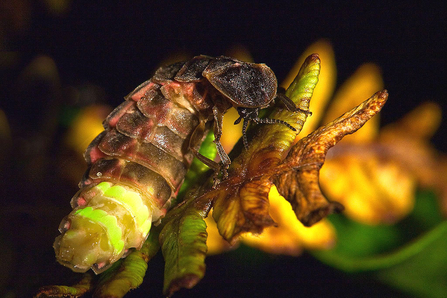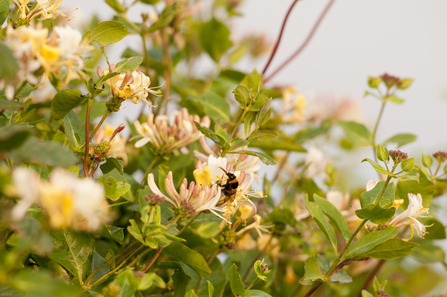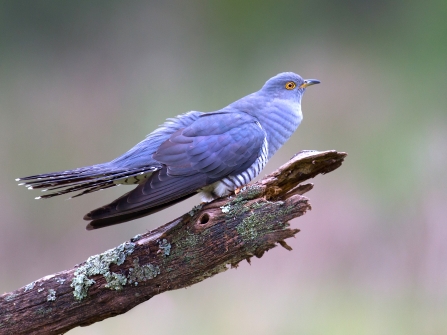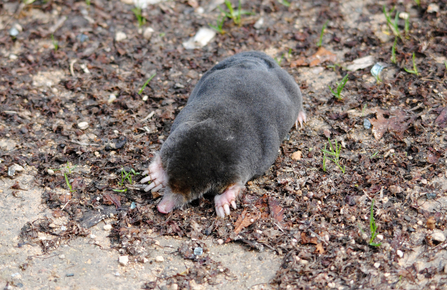Froglet by Richard Burkmar
Our top 10 wildlife sightings for June
A female glow-worm (Lampyris noctiluca) glinging to a blade of grass. Picture: Forza/ Wikimedia Commons
Froglets
One of the greatest joys of any summer has to be watching tiny baby frogs emerging from a pond and hopping onto dry land for the first time.
Tadpoles generally start developing legs in May, when they shift from a vegetarian to a carnivorous diet to get vital extra protein.
By June, the earliest tadpoles will have completely metamorphosed, and warm, wet nights are a great time to head to a pond with a torch and look for emerging froglets and toadlets. Our CS Lewis Nature Reserve in Oxford and is a great place to look.


A female glow-worm (Lampyris noctiluca). Picture: David Evans/ Wikimedia Commons
Glow-worms
If you do go hunting for frogs at night, keep a look out for glow-worms!
These famous insects are actually a type of beetle, and it is the wingless females that glow: they cling to grass stalks on warm summer nights and produce a greenish light from their abdomens. The winged males fly around searching for these emerald invitations.
We are very lucky to have a population at our Whitecross Green Wood a few miles north of Oxford – well worth a night out!

A bumblebee foraging on honeysuckle. Picture: Ross Hoddinott/ 2020Vision
Honeysuckle
Another wild highlight of June best enjoyed at night is the intoxicating aroma of honeysuckle.
The sweet scent of these flowers, carried on a warm summer breeze, is strongest at night in order to attract pollinating nocturnal moths.
Look out for honeysuckle twining itself around shrubs in hedgerows and woodlands.

An elephant hawkmoth on honeysuckle. Picture: Vaughn Matthews
Elephant hawkmoths
One moth that is famous for frequenting honeysuckle is the magnificent elephant hawkmoth.
The species gets its name from the fact that its grey, wrinkled caterpillar has a long 'neck' like an elephant's trunk, but the adult is more spectacular still, its velvet body a striking mix of bronzy green and hot pink.
A great place to see these winged wonders is our Greenham Common reserve near Newbury.
Round-leaved sundew by Vicky Nall
Sundews
Another plant that lures insects with ulterior motives is the killer carnivorous sundew.
Like several other carnivorous plants, sundews lure insects to their doom with leaves that are covered in sticky droplets of 'dew' which glisten like nectar. This dew is actually a glue that traps the hapless victim: glands on the leaf then release acids that dissolve the insect's body before the plant reabsorbs the nutrient-rich liquid.
Crimson-coloured round-leaved sundews grow in boggy areas at several BBOWT reserves, including Snelsmore Common near Newbury.

Cuckoos
The cuckoo is also a trickster of the natural world.
Summer visitors to Britain from Africa, these beautiful birds are notorious for laying their eggs in other birds’ nests, fooling them into raising their young.
Look out for them at our Thatcham Reedbeds reserve.
Cuckoo (https://vimeo.com/642769824)
Russell Savory
Debbie Lewis
Skippers
Skippers are small but beautifully-patterned butterflies that live in grasslands and meadows.
The large skipper has mottled gold and bronze wings, while the grizzled skipper has a striking coat of black and white checks.
Hunt for skippers on the chalky slopes of our Yoesden reserve in the Chiltern hills.

Jon Hawkins - Surrey Hills Photography
Barn owls
The beautiful barn owl, with pure white feathers and heart-shaped face, is perhaps our most-loved owl.
Females usually lay clutches of about four eggs in April or May and they start hatching a month later. The middle of June is a great time to look for the new parents hunting in the daytime for mice to feed their voracious chicks – look out at our Chimney Meadows reserve in West Oxfordshire.

A European mole. Picture: Amy Lewis
Moles
Another rodent that owls might swoop on at this time of year is the mole.
Spending most of their lives underground, June offers a rare chance to see young moles above ground as they hunt for new territory. Look out for them anywhere there are molehills!
Honey fungus. Picture: Les Binns
Honey fungus
Fungi also spend most of their life beneath the surface: one species that emerges to reproduce in June is the honey fungus.
These golden mushrooms sprout in clumps from stumps, roots and fallen branches, and grow up to 15cm in diameter in the moist woodlands at our Warburg Nature Reserve near Henley.
Things to do in June
Stay up-to-date with our work
Sign up below to receive the latest news from BBOWT, tips about how you can help wildlife, plus information on how you can get involved.




